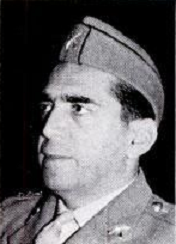
Back ثورة الشواف Arabic شۆڕشی شەواف CKB Aufstand von Mossul 1959 German Mosuli ülestõus Estonian Insurrection de Mossoul de 1959 French מרד א-שוואף במוסול (1959) HE Մոսուլի ապստամբություն (1959) Armenian Zamieszki w Mosulu (1959) Polish Восстание в Мосуле (1959) Russian 1959 Musul Ayaklanması Turkish
This article includes a list of general references, but it lacks sufficient corresponding inline citations. (August 2014) |
| 1959 Mosul uprising | |||||||
|---|---|---|---|---|---|---|---|
| Part of the Arab Cold War and Aftermath of the 14 July Revolution | |||||||
 Colonel Abd al-Wahab Shawaf , leader of coup | |||||||
| |||||||
| Belligerents | |||||||
|
| ||||||
| Commanders and leaders | |||||||
|
(Leader of parading Communists) |
(Commander of Iraqi Army Mosul Garrison) (Leader of the Shammar Tribe) (President of Egypt) (Chairman of the Executive Council of the Northern Region of the United Arab Republic) | ||||||
| Casualties and losses | |||||||
| 2,426[5] | |||||||
The 1959 Mosul Uprising was an attempted coup by Arab nationalists in Mosul who wished to depose the then Iraqi Prime Minister Abd al-Karim Qasim, and install an Arab nationalist government which would then join the Republic of Iraq with the United Arab Republic. Following the failure of the coup, law and order broke down in Mosul, which witnessed several days of violent street battles between various groups attempting to use the chaos to settle political and personal scores.
- ^ Mohammed Mughisuddin (1977), [1] p. 153
- ^ "Archived copy". Archived from the original on 2 April 2015. Retrieved 1 February 2013.
{{cite web}}: CS1 maint: archived copy as title (link) - ^ Wolf-Hunnicutt, Brandon (2011). The End of the Concessionary Regime: Oil and American Power in Iraq, 1958-1972. Stanford University. p. 36.
- ^ Davies, Eric (2005). Memories of State: Politics, History, and Collective Identity in Modern Iraq. University of California Press. p. 118. ISBN 9780520235465.
- ^ Podeh, Elie (1999). The Decline of Arab Unity: The Rise and Fall of the United Arab Republic. Sussex Academic Press. p. 85. ISBN 1-902210-20-4.
© MMXXIII Rich X Search. We shall prevail. All rights reserved. Rich X Search